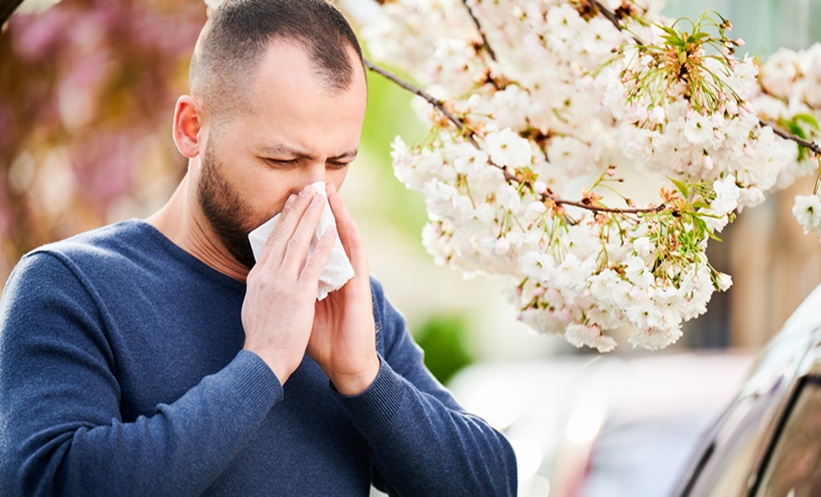Meeting Summary
This symposium provided an overview of the current and future technologies and treatments used in the field of allergen immunotherapy (AIT). Prof Ralph Mösges explored the concept of pre-seasonal immunotherapy in overcoming the problem of recurrent allergy, focussing on the use of Pollinex® Quattro versus the use of symptomatic treatment according to current guidelines. The use and mechanisms of adjuvants was explored by Prof Randolf Brehler, who discussed the use of adjuvants in AIT including delivery systems, immunopotentiators, and targeted delivery systems to facilitate optimum immune responses with the potential of a lower injection burden and increased efficacy of treatment. Prof Thomas Kündig concluded the symposium with an overview of the future of AIT and the use of virus-like particles (VLP) in harnessing the innate immune system response to protect against allergens.
Ultra-short Course Immunotherapy
Professor Ralph Mösges
The European Medicines Agency (EMA) defines four criteria for the market authorisation application for AIT: the treatment of allergic symptoms; the sustained clinical effect of the treatment; the long-term efficacy and disease-modifying effect of the treatment; and curing the allergy with sustained absence of allergic symptoms in post-treatment years. This is illustrated in the landmark study by Durham et al.1 where the treatment of rhinoconjunctivitis in response to grass pollen led to an initial decrease in symptoms in the first season, with a sustained clinical effect in Seasons 2 and 3. Long-term efficacy and disease modification continued to be observed in follow-up Seasons 1 and 2.1
However, the question that remains is whether AIT is able to cure allergies. An epidemiological study in 790 German patients in Germany undergoing AIT found that 100% of patients expected a total cure of their allergy after treatment.2 Evidence of long-lasting clinical efficacy of AIT has been demonstrated in a study where birch pollen immunotherapy resulted in a long-term loss of Bet v 1-specific T helper (Th)2 responses, transient induction of allergen-specific interleukin (IL)-10-producing T receptor 1 cells and synthesis of immunoglobulin (Ig)E-blocking antibodies in serum.3 In children, pre-seasonal grass pollen immunotherapy for 3 years was effective and a 12-year follow-up after the cessation of immunotherapy in the same study cohort revealed an ongoing clinical benefit.4 Prospective evaluation of sublingual immunotherapy (SLIT) given for 3, 4, or 5 years showed that in the patients receiving SLIT for 3 years, the clinical benefit persisted for 7 years. In those receiving immunotherapy for 4 or 5 years, the clinical benefit persisted for 8 years, however symptoms reappeared.5 Revaccinating these patients with therapy resulted in clinical benefit as seen before; however, often adherence to therapy, particularly if it is SLIT, can be a problem.
Data from a survey of 296 allergists in Italy on the use of SLIT to treat allergic rhinitis and asthma revealed that after 1 year of SLIT only 45% of patients remained on therapy and only 15% of patients completed the full therapy course of 3 years.6 When SLIT adherence was compared with subcutaneous immunotherapy in a large German cohort treated with specific grass pollen immunotherapy, results indicated that there was no difference in the levels of adherence with either modes of administration.7 Hence, there is a need for AIT that is effective and results in increased adherence.
Ultra-short pre-seasonal subcutaneous therapy may therefore provide a better choice for patients. Pollinex® Quattro is a unique allergy specific immunotherapy with three active components: an allergoid, monophosphoryl lipid A (MPL), and micro crystalline tyrosine. Polymerisation of the allergen to create an allergoid reduces the number and specificity of specific IgE epitopes whilst retaining much of the IgG reactivity, so that the dose can be increased without compromising tolerability. MCT is employed as a natural depot that allows for controlled allergoid release from the injection site. The rapid metabolism of MCT, the half-life of which is approximately 48 hours, permits the short-course nature of Pollinex Quattro. The MPL component acts as an adjuvant whose activity is restricted to the toll-like receptor 4 and stimulates immune response from allergen-specific Th1 cells. Together, these components allow for a reduction in injections per year from more than 20 on average to just 4 pre-seasonal injections, so that within 3 weeks the full dose can be administered. A randomised, double-blind, placebo-controlled Phase IIb study assessing the clinical efficacy of modified short ragweed pollen adsorbed to MCT + MPL illustrated the synergistic effect of adding MPL to MCT by increasing efficacy by a further 25%8 compared with non-adjuvanted AIT. Similar short-term immunotherapy with allergoids and the addition of MPL improved symptoms in >93% of pollen-allergic patients after 3 years.9
The benefits of short-course AIT were further demonstrated in a non-interventional study in adults, adolescents, and children suffering from recurrent allergic rhinitis who had successfully undergone AIT (regardless of route of administration or product) 5–10 years earlier and who could choose either treatment with Pollinex Quattro (four injections) or state-of-the-art symptomatic therapy. The primary endpoint was assessment of the efficacy of AIT with Pollinex Quattro during 30 days of the pollen peak based upon a change in rhinitis or conjunctivitis symptoms or change of medication, as documented in a diary. All patients had access to symptomatic treatment. Combined symptom and medication scores were significantly and consistently lower than those of the control group during 30 days of the peak grass pollen season, demonstrating the efficacy of the tested AIT. The percentage of patients not using additional symptomatic medication during the 2014 and 2015 grass pollen seasons was significantly lower (p<0.001) in the group treated with Pollinex Quattro than in the control group, and tolerability assessment by the patients demonstrated that over 80% of patients tolerated injections well or very well, and the remaining indicated moderately tolerating the injections. There were no major safety issues identified, with 30% of patients experiencing injection site reactions.
In summary, results from large clinical trials have shown that revaccination with Pollinex Quattro is successful in treating patients who redevelop an allergy many years after their initial AIT, leading to an improvement in symptoms with a reduction in the frequency of therapy administration. New advances in AIT exceed the effects of symptomatic treatment according to current guidelines.10
Adjuvants in Immunotherapy
Professor Randolf Brehler
An ideal vaccine must initiate an innate immune response capable of directing the adaptive immune response toward efficient inactivation and removal of the pathogen, followed by the development of immune memory. Adjuvants are added to vaccines to enhance the immunogenicity of highly purified antigens that have insufficient immune-stimulatory capabilities.11 Adjuvants work by extending antigen exposure, increasing antibody titres, enhancing cell-mediated and mucosal immunity, and supporting the production of cytokines. Their use in vaccines reduces the number of injections required for effective immunisation and stabilises vaccine formulations.
Several adjuvants have been used for vaccine development, with aluminium being one. Intraperitoneal delivery of aluminium resulted in activation of IL-1b via the NLRP3 inflammasome, the activation of dendritic cells, promotion of inflammatory monocytes, and enhancement of antigen uptake.12 Although the ability to drive an antibody titre response is greatly improved by the use of adjuvants, there are some disadvantages; for example it has been suggested that aluminium has a propensity to accumulate in tissues.13 There are no preclinical models on the kinetics of aluminium localisation after subcutaneous injection based on the allergy formulations that currently exist, therefore this required investigation. The analysis of absorption of aluminium in rats after four injections with a 3–4 day interval showed that the depot of aluminium from the injections persisted at the injection site for 180 days.13 Extrapolation of this data from rats to humans would predict that an aluminium-containing adjuvant would be retained at the subcutaneous dose site for up to 37 years.13
There is discussion about whether a long-lasting allergen depot is necessary for the immunological efficacy of a vaccine or for subcutaneous AIT. In a mouse model, removal of the injection site (ear pinna) as early as 2 hours after administration had no appreciable effect on antigen-specific T and B cell responses, indicating that antigen depot does not play an important role in alum adjuvant activity.14 Although aluminium is used as an adjuvant for many diseases, oil-in-water emulsions and MPL plus aluminium are also used, with several others currently being investigated.15
Delivery retardation of the adjuvant allows the slow and sustained release of an allergen for continuous stimulation of the immune system in order to reduce side effects and to enhance efficacy. In animal experiments, induction of IgG depends preferentially on the aluminium concentration rather than on the allergen concentration.16 Further investigation in a clinical trial however, was not able to prove that a specific immunotherapy preparation with increased aluminium adjuvant and decreased allergen concentrations was clinically efficacious.17 Furthermore there is debate about the chronic toxicity of aluminium in the context of neurologic disorders and autoimmune and inflammatory syndrome. It has previously been shown to increase Th2 sensitisation.18 Its use in patients with renal insufficiency may contribute to its accumulation in the body, particularly in the bone and brain.
An alternative depot adjuvant to aluminium is MCT which forms a highly stable vaccine with allergens and has been shown to facilitate interferon gamma and IL-10 secretion and induce less IgE but similar IgG responses in comparison with aluminium.19 MCT elicits the Th1 response, is compatible with other adjuvants, and has a proven safety profile. Its half-life (48 hours) allows for a prolonged immune exposure yet with regiment that allows a rapid up-dosing regimen.
Adjuvants, whether they act as delivery systems, immunopotentiators, or vector systems, are a key part of AIT with the ability to stimulate the immune system whilst demonstrating a proven safety profile.
Future Immunotherapy: Virus-Like Particles
Doctor Thomas Kündig
Immunological memory is based upon exposure to an antigen which then results in the proliferation of specific B and T cells and the subsequent formation of memory B and T cells. AIT needs to be able to elicit enough of an immune response to build immunological memory to be successful.
Other than increasing allergen dose, which may have negative safety implications, alternative methods to increase the efficacy of AIT have long been sought after. Direct intralymphatic immunotherapy into a subcutaneous lymph node markedly enhanced protective immune responses, so that both the dose and the number of allergen injections could be reduced, making intralymphatic immunotherapy safer, faster than other forms of immunotherapy, and most importantly, enhancing patient convenience and compliance.20 Lymph nodes are key structures that co-ordinate the type and specificity of immune responses to an allergen, most importantly, it is in the lymph nodes where antigen-presenting cells such as dendritic cells present the allergen to T and B lymphocytes. Thus, lymph nodes are key structures that vaccines and immunotherapeutic agents must reach to generate antigen-specific responses that can change the course of an allergy. In one clinical trial, patients were randomised to receive either 54 subcutaneous injections with pollen extract over 3 years or 3 intralymphatic injections over 2 months. Results showed that three low-dose intralymphatic allergen administrations increased tolerance to nasal provocation with pollen within 4 months and reduced treatment time from 3 years to 8 weeks.21 However while a patient only requires three injections, the equipment needed to locate lymph nodes as well as the extra time required for the procedure certainly represent the disadvantage.
With epicutaneous immunotherapy (EPIT), the allergen is delivered to the epidermis where it is picked up by Langerhans cells or dermal dendritic cells and transported to the lymph node. In two clinical trials, the application of 12 and 6 patches of EPIT led to approximately 70% amelioration in allergic symptoms versus only 20% amelioration in the placebo group.22 In order to achieve this effect, the skin must be prepared by removing the stratum corneum, allowing the allergen to enter the epidermis. This is because the epidermis is highly resistant to molecules passing through it and thus techniques investigated so far have utilised very high concentrations of allergen.
Dangerous pathogens are associated with molecular ‘patterns’ (PAMPs). These can be in the form of bacterial DNA, viral RNA, and lipopolysaccharides which trigger the immune system to produce a response. PAMPs induce the activation of antigen-presenting cells (dendritic cells and B cells) by activating toll-like receptors. An approach to improving AIT includes the addition of adjuvants. MPL is such an adjuvant. Formulated from the cell wall of the bacterium Salmonella minnesota, MPL elicits a strong immune response.
A potential solution to the problems of existing AIT, i.e. poor uptake of subcutaneously injected or orally administered allergen by dendritic cells, skin barriers reducing efficacy of EPIT, patient adherence, and time spent with a patient, is VLP. The function of a virus capsid is to protect the DNA or RNA of the virus and as such, there have been attempts to load bacterial or viral DNA into the capsid to act as an adjuvant in therapy. After subcutaneous injection, a VLP is the perfect size for being transported via lymph vessels into the lymph nodes. Also a quasi-crystalline array of antigenic epitopes strongly enhances B cell responses, as cross-linking numerous B cell receptors can activate B cells to produce antibodies without the need for T cell help. This is known as a ‘T cell independent antibody response’. Attaching Fel d1 on the surface of a VLP to desensitise mice showed that the mice were protected against anaphylaxis.23 This protection is still seen, even in the absence of T cells and can even be transferred from one mouse to another by simply making an adoptive serum transfer. Injecting a VLP loaded with hundreds of allergens on the surface of the particle is surprisingly safe in highly allergic individuals, mainly due to the inability of the particle to diffuse into tissue to cause mast cell degranulation.
The subcutaneous vaccination of humans with VLP loaded with allergen resulted in an increase in IgG, particularly IgG1 and IgG3, subclasses that are typically observed after a viral infection; however, the antibodies to this particle dropped to baseline levels within a year.21 In order to overcome this, a novel VLP has been developed and testing has revealed that it is able to generate a long-lived IgG response. The use of this particle in a future vaccine, such as the peanut vaccine, may help to further potentiate the immune response and protect allergic individuals.








